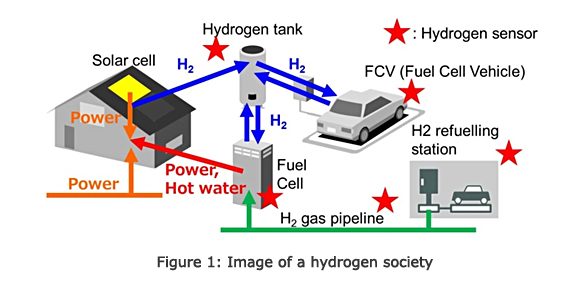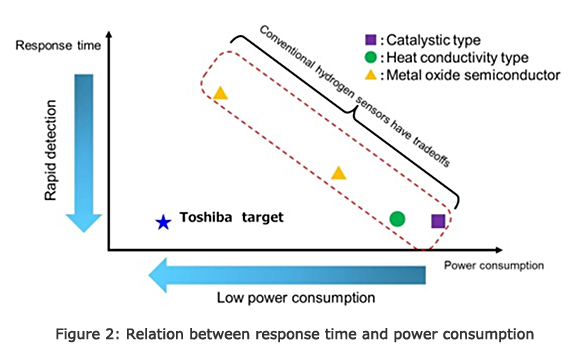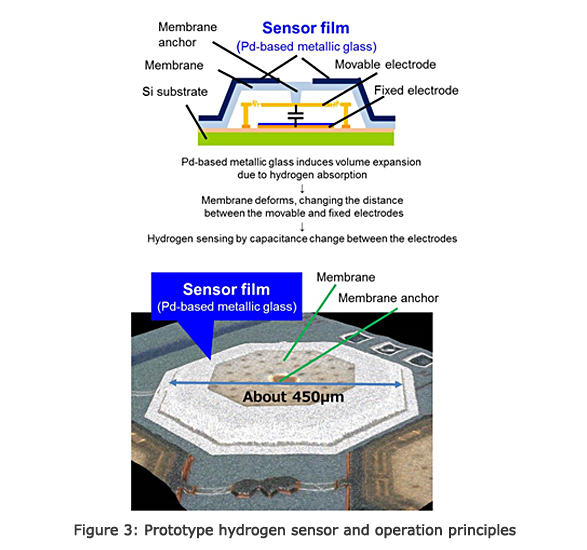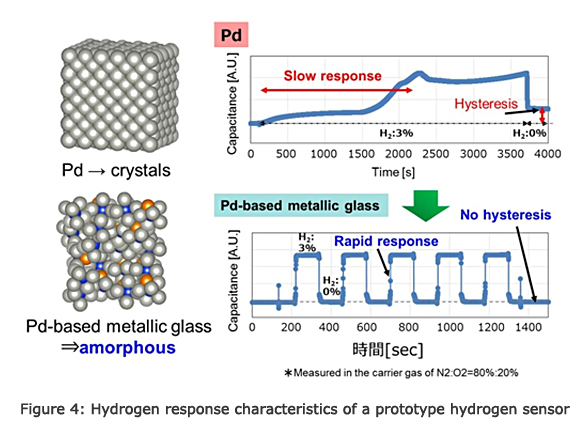Toshiba develops a hydrogen sensor with rapid detection and low power consumption for a safer hydrogen society
Overview
Toshiba has developed a hydrogen gas sensor that consumes less than 1% the power of conventional devices(Note 1) without loss of detection speed. It is based on a Toshiba-developed microelectromechanical system (MEMS) structure that employs a palladium-based metallic glass(Note 2) to realize both rapid detection and low power consumption, overcoming the usual trade-off of conventional sensors. The sensor can be fabricated on semiconductor manufacturing lines, allowing low-cost mass-production. Details on the technology will be presented on 20 June at the Transducers 2017 international conference held in Taiwan.
Development Background
Among measures to counter climate change, development of hydrogen-related technologies are intensifying, realizing a low carbon hydrogen energy society. However, hydrogen is highly flammable, and leaks must be immediately detected. The battery-powered detectors that are used to do this must be capable of a rapid response to any leak, continual monitoring for long periods of time, and consume very little power However, current sensors require a heater to sense hydrogen, pushing power consumption to the relatively high range of several tens of milliwatts to several watts(Note 3). It is also necessary to use the heater frequently to reduce detection time, resulting a trade-off between detection time and power consumption.
Features of the Technology
By applying its know-how in semiconductor technologies to the problem, Toshiba has developed an original MEMS structure with palladium-based metallic glass that realizes both rapid detection and low power consumption. The sensor detects hydrogen at a power consumption level in the order of 100μW, less than 1% that of conventional devices, because it does not require continuous heating and adopts a capacitive-type MEMS structure(Note 4).
Palladium is a well-known hydrogen storage material, but it takes time to combine with hydrogen, and requires heating for desorption. Adopting palladium-based metallic glass—an amorphous(Note 5) alloy—instead of palladium suppresses hydrogen bonding and enables a detection time of several seconds, similar to the time for conventional rapid-detection hydrogen sensors. The developed sensor can be fabricated on semiconductor production lines, and many sensors can be manufactured from one wafer, so low cost mass production is possible.




Future developments, plans, and goals
Toshiba will continue development to further refine the sensor structure and optimize manufacturing process, with a view to commercialization to meet an expected expansion of demand for hydrogen-related products, such as fuel cell vehicles and their hydrogen stations, in 2020 and after.
- (Note 1)
- In comparison with currently used hydrogen sensors such as the catalytic type.
- (Note 2)
- Palladium is a metal that can uptake and store hydrogen It normally occurs as a crystal, but alloying it with other elements disrupts the crystal structure to form "metallic glass."
- (Note 3)
- Based on Toshiba's research. Source: Toshiba
- (Note 4)
- Capacitive-type MEMS structure: Capacitance is formed between movable and fixed electrodes and changes when the distance between the electrodes is mechanically changed by deformation of the membrane of the MEMS. Since direct current does not flow through the structure, power consumption is low.
- (Note 5)
- Amorphous: non-crystalline solid having no regularity.


